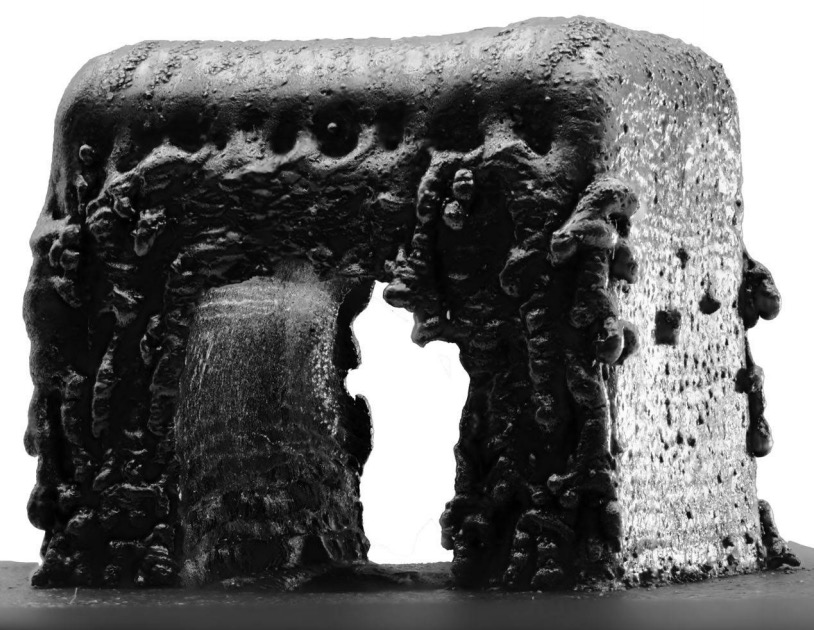
Researchers have developed a very unusual support material: dissolvable carbon steel that could be used for metal 3D printing support structures.
This is a very significant development in the technology, as it may lead to some new methods of 3D printing metal, one of the biggest demands by industry today.
But first, why support structures? In layer-by-layer plastic extrusion 3D printing, these are extra materials used to support portions of the model that would otherwise have insufficient material beneath it, leading to model collapse. These temporary supports are removed after printing completes, sometimes manually and sometimes by dissolving them if the support material permits this.
Up to now, metal 3D printing has not required support material due to the nature of the printing processes used. In almost all cases of metal 3D printing, a bed of finely powdered metal is used. The powder is selectively bound, either by melting with a laser or electron beam, or a liquid binder. Subsequent layers of the print are accomplished by adding another layer of powder and repeating.
This powder approach does not require support material, because the un-bound powder provides the support. After printing, the loose powder is removed to reveal the printed object.
So why then, do we need dissolvable support material for metal 3D printing? It seems that virtually all of the existing metal 3D printing processes do not require it, as they are powder-based.
My thought is that this could enable the development of a new kind of metal 3D printing process that involves the use of robot arms that move freely through the build volume. Equipped with two heads, one to deposit metal and the other to deposit the new dissolvable support material, you could create a large-scale device that could 3D print very complex objects in metal. Complex, in this case, means geometries that require a lot of support material, perhaps even internal to the structure. It just gets dissolved out after printing, just like plastic prints.
This approach could also get around one of the problems with powder-based 3D printing: enclosed volumes MUST be filled with metal powder. A robot arm-style system need not fill enclosed structures, as it would deposit metal only where necessary.

